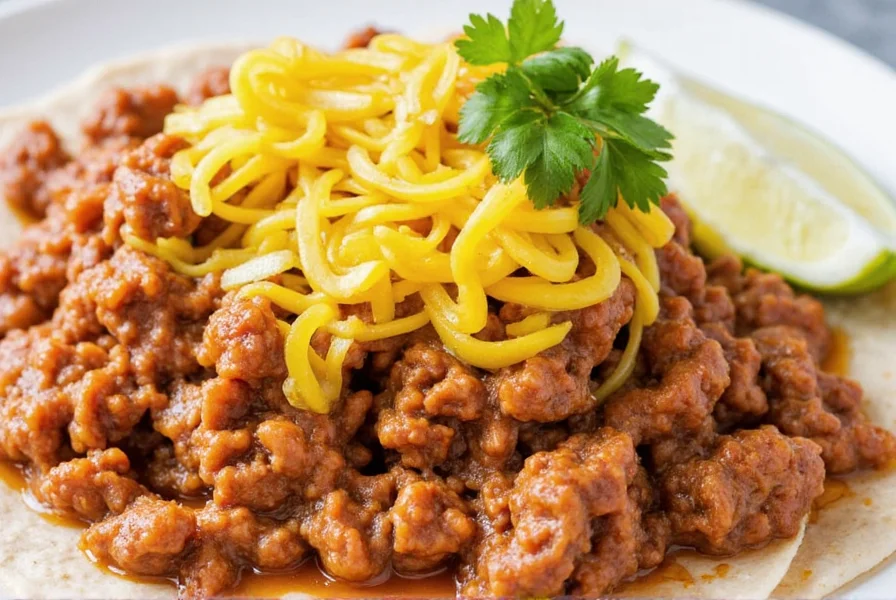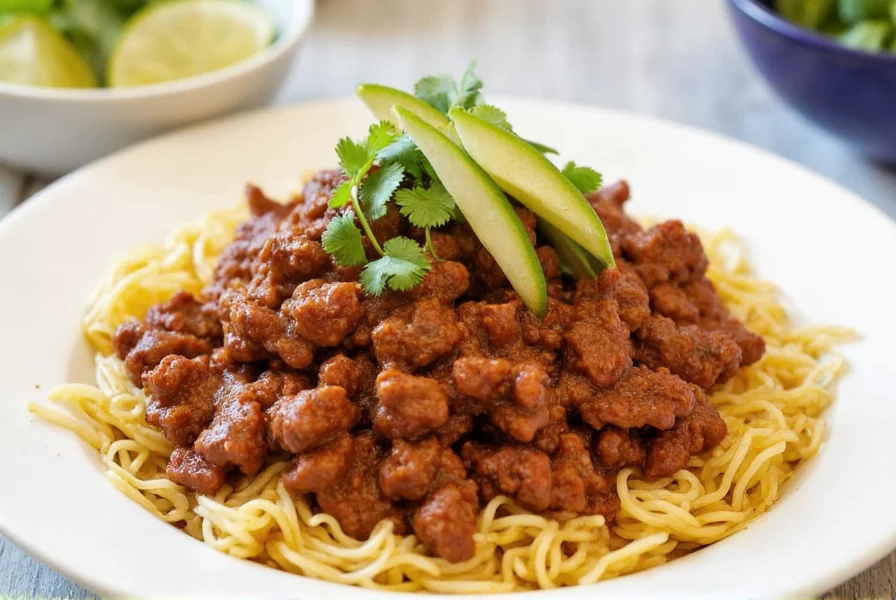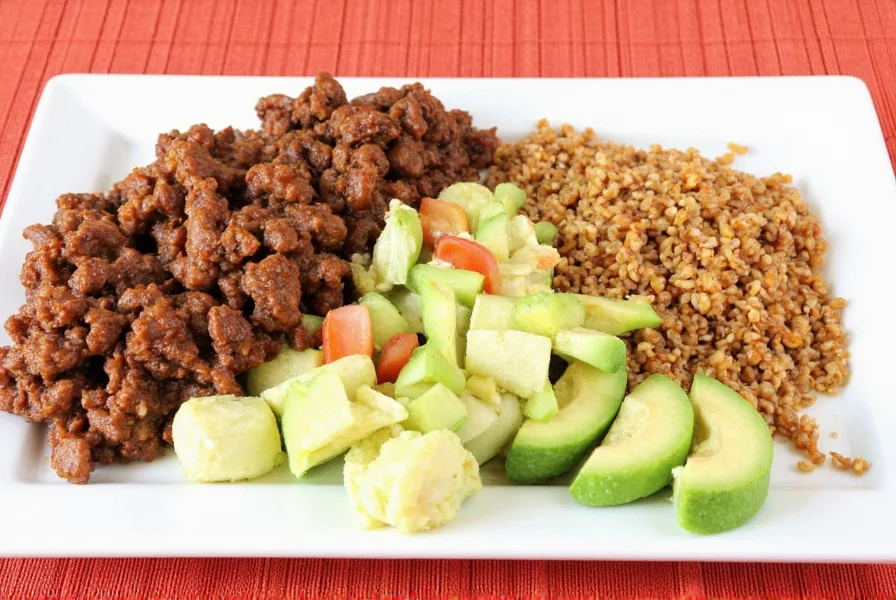Table of Contents
Introduction to Pork Carne Adovada
Discover how to make authentic New Mexican pork carne adovada with this easy step-by-step recipe. This traditional dish features tender pork slow-cooked in a rich, tangy sauce made from green chilies and spices - perfect for weeknight dinners or special occasions.

Simple Recipe for Pork Carne Adovada
Ingredients
- 2 lbs pork shoulder (cut into 1-inch chunks)
- 4 large green chile peppers (roasted, peeled, and chopped)
- 4 cloves garlic (minced)
- 1/4 cup apple cider vinegar
- 1 tsp ground cumin
- 1 tsp smoked paprika
- 1 tsp Mexican oregano
- 1/2 tsp salt
- 1/4 tsp black pepper
- 2 tbsp vegetable oil
- 1/2 cup chicken broth (optional for extra moisture)
Instructions
- Prepare the pork: Trim excess fat from pork shoulder and cut into 1-inch cubes. Pat dry with paper towels for better browning.
- Brown the meat: Heat vegetable oil in a large Dutch oven over medium-high heat. Add pork in batches and brown on all sides (about 3-4 minutes per side). Remove and set aside.
- Sauté aromatics: In the same pot, add minced garlic and sauté for 1 minute until fragrant.
- Combine ingredients: Return pork to the pot. Add roasted green chilies, vinegar, cumin, paprika, oregano, salt, and pepper. Stir well to coat the meat.
- Simmer slowly: Add chicken broth if needed for moisture. Bring to a gentle boil, then reduce heat to low. Cover and simmer for 2.5-3 hours until pork is fork-tender, stirring occasionally.
- Finish and serve: Remove lid for last 30 minutes to thicken sauce. Serve warm with rice, warm tortillas, and fresh cilantro.

| Spice | Fresh vs Dried | Best Use in Carne Adovada |
|---|---|---|
| Green Chilies | Fresh: roasted and peeled for bright flavor; Canned: convenient substitute | Essential base for authentic sauce - use 4-6 peppers for medium heat |
| Smoked Paprika | Dried: provides deep smoky notes | Use 1 tsp for rich color and complexity |
| Mexican Oregano | Dried: stronger than Mediterranean oregano | Use dried for concentrated flavor in slow-cooked dishes |
Spice Basics for Authentic Flavor
Understanding these key spices ensures your carne adovada has the perfect balance of heat, smokiness, and herbal notes:
- Green Chilies: The foundation of the dish. New Mexico green chilies offer mild heat with earthy notes. Roast and peel fresh chilies for maximum flavor.
- Smoked Paprika: Adds depth without extra heat. Choose sweet or hot smoked paprika based on your preference.
- Mexican Oregano: Has a stronger, more citrusy flavor than Mediterranean oregano. Essential for authentic taste.
- Cumin: Provides earthy warmth. Toast whole cumin seeds before grinding for enhanced flavor.
Cooking Tips for Perfect Results
- Don't skip browning: Searing the pork creates flavorful fond in the pot that enhances the sauce.
- Simmer low and slow: Cook at gentle bubble for 2.5-3 hours to break down connective tissue in pork shoulder.
- Adjust heat level: Remove chile seeds for milder heat. Add a pinch of sugar if too acidic.
- Make ahead: Flavors improve overnight. Reheat gently with a splash of broth if needed.
- Serving suggestions: Perfect with white rice, warm corn tortillas, avocado slices, and fresh cilantro.
| Product | Description | Best For | Target Audience | Suitable Occasions |
|---|---|---|---|---|
| Smokehouse Paprika | Smoked paprika with rich, deep flavor | Adovada sauce | Cooking enthusiasts, home chefs | Weeknight meals, potlucks |
| Mexican Oregano | Strong, aromatic oregano used in traditional dishes | Seasoning meats and sauces | Spice lovers, authentic recipe seekers | Family dinners, holiday feasts |
| Green Chile Peppers (Canned) | Ready-to-use canned chiles for convenience | Quick adovada recipes | Busy cooks, beginners | Lunch, dinner, casual gatherings |
Frequently Asked Questions
What cut of pork is best for carne adovada?
Pork shoulder (also called pork butt or Boston butt) is ideal because its marbling and connective tissue break down during slow cooking, creating tender, juicy meat. Avoid lean cuts like pork loin which become dry.
Can I substitute red chilies for green in carne adovada?
Yes, but it becomes red chile adovada with different flavor profile. Red chiles are sweeter and earthier while green chiles offer brighter, grassier notes. Use same quantity but expect color and taste differences.
How long should I simmer carne adovada?
For fall-apart tender meat, simmer 2.5-3 hours on low heat. The collagen in pork shoulder needs time to convert to gelatin. Pressure cooking can reduce time to 45-60 minutes but yields less complex flavor.
Why is my carne adovada too spicy?
Add 1-2 teaspoons of honey or sugar to balance heat. Stir in a splash of cream or coconut milk for richness. Serve with cooling sides like sour cream or avocado. Remember that spice mellows as it sits overnight.
Can I make carne adovada ahead of time?
Yes! Carne adovada tastes better the next day as flavors meld. Store in airtight container in refrigerator for up to 4 days. Reheat gently with a splash of broth if too thick. Freezes well for up to 3 months.
Conclusion
Pork carne adovada is a flavorful New Mexican tradition that's surprisingly simple to make at home. With the right ingredients and slow cooking technique, you'll achieve tender, juicy meat in a rich, tangy sauce that's perfect for any occasion.
Remember: browning the meat properly, using quality spices, and simmering low and slow are the keys to authentic results. Don't be afraid to adjust heat levels to your preference - cooking is about making it your own!












 浙公网安备
33010002000092号
浙公网安备
33010002000092号 浙B2-20120091-4
浙B2-20120091-4